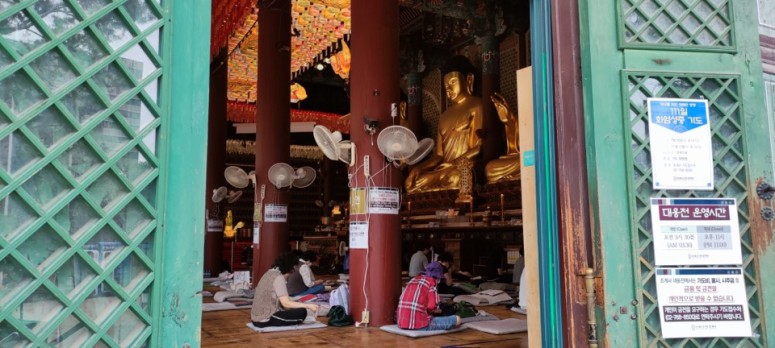When you think of Korea and religion what comes to mind? Buddhism? Taoism? Confucianism? Christianity?
It might surprise you to know that Korea is actually a largely irreligious country with three fifths of the population professing no religion and almost a quarter of Koreans being Christians (Catholic and Protestant) and around 15% Buddhist.
Although not a religion per se, Confucianism and Buddhism have been deeply infused in all of Korea.
Each religion has a unique story in the country, let’s explore them, starting with Buddhism in Seoul’s Jogye Temple, a temple of the Gorgyeo era.
Buddhism arrived early into Korea, 372 AD from the Qin Dynasty to be precise. Other monks arrived over the next centuries to continue to spread the religion across the peninsula. It enjoyed a high level of acceptance rising to become the state religion of the Goryeo Kingdom from 918-1392.
This was followed by five centuries of suppression (1392-1897) when the Goryeo was replaced by the Joseon who believed in Neo-Confucianism instead.
Despite the strong efforts at suppression it is said that Seon Buddhism had an intellectual renaissance. With many theological writings on deep religious texts.
This suppression was not passive but aggressive. Active suppression only ceased in 1598 after Buddhist monks helped to repell the Japanese. Buddhism while still not favoured was allowed to continue with tight controls.
As Korea traded hands from the Joseon to the Japanese empire, Buddhism received a Japanese style makeover and was organised in the Japanese way and clerics started to adopt Japanese approaches (such as allowing marriage and offspring).
Jogye Buddhism is the main form of Buddhism in Korea and the Jogyesa Temple a short walk from Gyeongbokgung Palace is its centrepiece.
The temple was built in the late 14th century in the Gorgyeo kingdom (before the Joseon kingdom) but was destroyed in a fire. The current structure was rebuilt in 1910 by the efforts of monks of the Jogye order.

Jogye is a Korean form of Buddhism which combines Korean style of direct Buddhism and the theological foundations of sutra-based Buddhism. The order has more than 1700 temples in Korea, with more than 10 thousand clerics and almost 10 million adherents.

Due to its military history with Japan, and colonisation by Japan some parts of Korea. Buddhism was influenced by Japanese culture. It was in 1954, just under a decade after the end of World War 2 and at the close of the Korean War that a ‘purification’ drive took place in Korean Buddhism to remove Japanese influence and reinstate traditional Korean Buddhism. The Jogyesa temple was renamed to be symbolic of that change.

Jogyesa temple is not the oldest temple in Seoul, there are tempels that go back even further in time such as Bongeunsa Temple in Gangnam.

Yes, the Gangnam of Psy fame.
Located right across the street from a major shopping mall in Gangnam (COEX), Bongeunsa was founded in the year 794 under the Silla Kingdom. The temple is dedicated to the Maitreya Buddha (the future Buddha) with a 28 metere statue dedicated to the Buddha at the heart of the temple. It survived countless centuries of supression rising to become the main Korean Buddhism Seon temple from 1551 to the mid 20th century when the Jogyesa took over that importance.

One of the activities you can do in the temples is known as a temple stay, stay in the temple to cleanse your mind and live simply like the monks for a period of time. As you can imagine this is now more of a tourist activity than something people do on the regular (unlike say in Thailand).
Despite its deep historical roots in Korea, the suppression by Joseon Confucianism and later the rise of a new religious group – Christianity has led to sometimes antagonist and acrimonious relations between the religions.
More on that in the next post on Christianity in Korea.
ON THE MAP (Jogyesa Temple)
ON THE MAP (Bongeunsa Temple)
